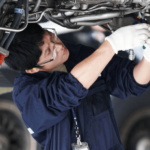The EU Horizon 2020 ULTIMATE project is looking at ‘radical engine concepts’ to significantly reduce engine C02 and noise emissions by 2050. The project’s researchers explain more.
The revolution in fuel efficiency that commercial air transport has undergone over the last 60 years is astonishing and has helped keep airlines keen to buy new aircraft. Development efforts are now, however, showing diminishing returns, increasing interest in more radical concepts.
Large turbofan engines generate thrust with an overall efficiency of around 40%. Significant improvements should still be possible if the remaining major losses could be attacked by more radical design concepts.
The major loss sources in state-of-the art turbofans are combustor irreversibility, core exhaust heat loss and bypass exhaust kinetic energy. Together these account for more than 80% of the overall losses, as shown in Fig.1.
Radical technologies
Industry is already reducing kinetic energy loss by introducing ultra-high bypass ratio geared fan engines, and open-rotor concepts are also being considered to give further improvements.
To attack the other two loss sources, the EU Horizon 2020 research and innovation ULTIMATE project (Ultra-Low emission Technology Innovations for Mid-century Aircraft Engines) has identified five breakthrough technologies: topping cycles (or constant volume combustion systems), intercooling, recuperation, secondary combustion, and bottoming cycles. These technologies are complemented by novel propulsor and nacelle designs.
Our projections for year-2050 aircraft without these breakthrough technologies give CO2 reductions of 45% for a long range aircraft with advanced geared turbofans, and 59% for a short range aircraft with open rotor engines, both relative to aircraft in service in year 2000. But the Advisory Council for Aviation Research and Innovation in Europe (ACARE) goals ask for 75% reductions, with 68% coming from the aircraft and the rest from operational improvements.
Towards 2050
So what can be achieved beyond these year-2050 aircraft engines?
ULTIMATE constant volume combustion core concepts offer significant improvements. The concept shown in Fig.2 is predicted to give around 12% fuel-burn improvement when compared to the more-conventional year-2050 engines. Including intercooling is shown to give more-compact constant volume combustion systems, reducing system weight and easing engine integration.
Secondary-fluid heat exchangers offer more efficient exhaust heat recovery and introduce an additional degree of freedom in design.
Complementing the ULTIMATE aero-engine-core technologies with the innovative, low noise, ‘Boxprop’ propeller as shown in Fig.3, will result in a quieter propulsion system that still delivers the open-rotor fuel-burn benefits. The substantial efficiency improvements predicted from ULTIMATE technologies should help meet the ACARE targets, but to get all the way there, CO2 emissions must be further reduced, perhaps by using synthetic fuels or bio-fuels, or by more radical aircraft designs.
Researchers in ULTIMATE have matured the radical engine concepts to TRL 2 and technology development road-mapping now has the priority. Experimental validation of critical technologies tops the ULTIMATE engineers’ future wish list.
ULTIMATE is led by Chalmers University of Technology and the consortium includes Cranfield University, Bauhaus Luftfahrt, ISAE Supaero, Aristotle University of Thessaloniki, GKN Aerospace Sweden, MTU Aero Engines, Rolls-Royce plc, Safran Aircraft Engines and ARTTIC. The project finishes in August 2018.
For more details, please visit our stand in Hall 3 at Farnborough Air Show or come to our FINN Sessions presentation on Tuesday July 17 in the Innovation Theatre.

